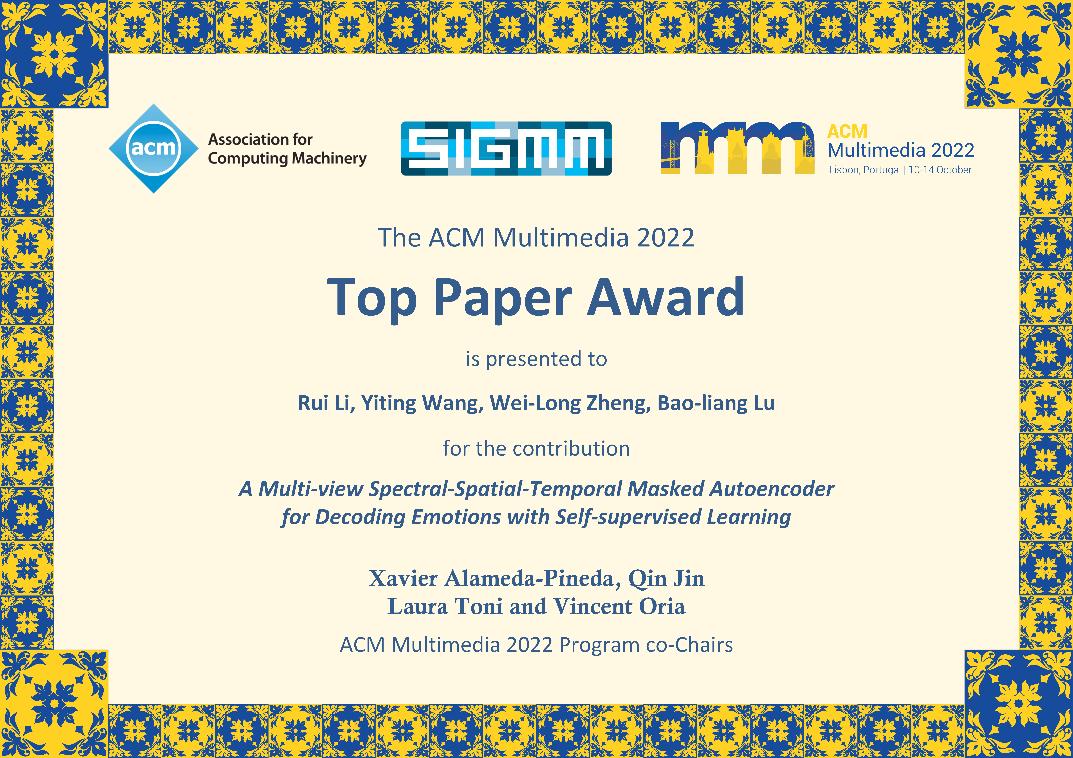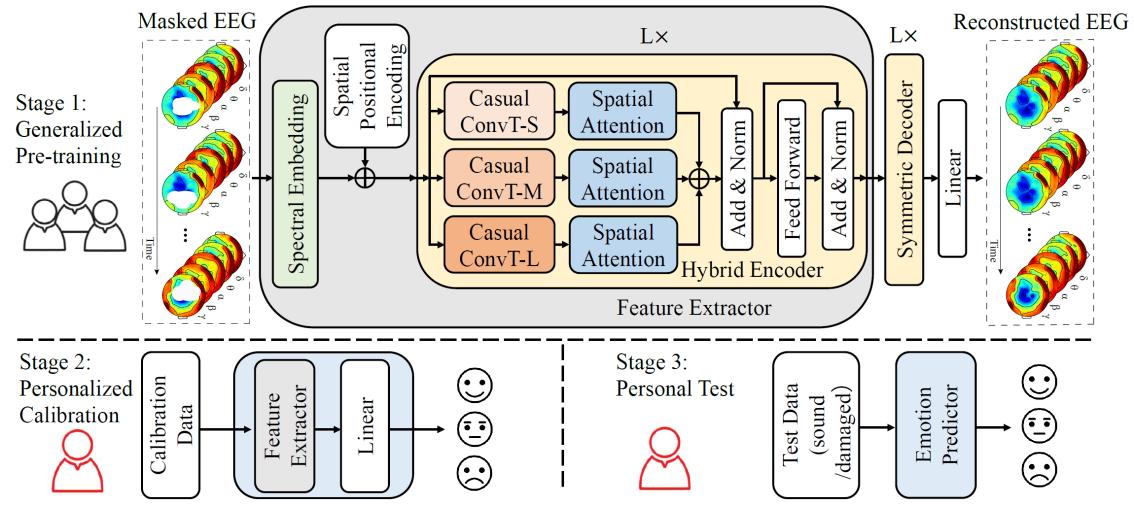Recently, ACM
Multimedia 2022 was successfully held in Lisbon, Portugal. Li Rui, a PhD candidate
co-supervised by Prof. Bao-Liang Lu and Associate Professor Wei-Long Zheng from
Key Laboratory of Shanghai Commission for Intelligent Interaction and Cognitive
Engineering, Department of Computer Science and Engineering, won the ACM
Multimedia Top paper Award.

ACM Multimedia (CCF A) is the
worldwide premier conference and a key world event to display scientific
achievements and innovative industrial products in the multimedia field. ACM
Multimedia 2022 has a total of 2473 valid submissions, with an acceptance rate
of 27.9%. A total of 13 Top papers were selected, including one Best Paper and
one Best Student Paper.
Background
Affective Brain-computer
Interface has achieved considerable advances that researchers can successfully
interpret labeled and flawless EEG data collected in laboratory settings.
However, the annotation of EEG data is time-consuming and daily collected EEG
data may be partially damaged since EEG signals are sensitive to noise. These
challenges limit the application of EEG in practical scenarios.
Introduction
The title of the paper is: ‘A Multi-view Spectral-Spatial-Temporal
Masked Autoencoder for Decoding Emotions with Self-supervised Learning’. In this paper, they proposed a
Multi-view Spectral-Spatial-Temporal Masked Autoencoder (MV-SSTMA) with
self-supervised learning to tackle the realistic challenges of EEG towards
daily applications. The MV-SSTMA is based on a multi-view CNN-Transformer hybrid
structure, interpreting the emotion-related knowledge of EEG signals from
spectral, spatial, and temporal perspectives. The model consists of three
stages: 1) In the generalized pre-training stage, channels of unlabeled EEG
data from all subjects are randomly masked and later reconstructed to learn the
generic representations from EEG data; 2) In the personalized calibration
stage, only few labeled data from a specific subject are used to calibrate the
model; 3) In the personal test stage, our model can decode personal emotions
from the sound EEG data as well as damaged ones with missing channels.
Extensive experiments on two open emotional EEG datasets demonstrate that their
proposed model achieves state-of-the-art performance on emotion recognition. In
addition, under the abnormal circumstance of missing channels, the proposed
model can still effectively recognize emotions.

The overall process of the proposed method.
Paper link:
https://dl.acm.org/doi/10.1145/3503161.3548243